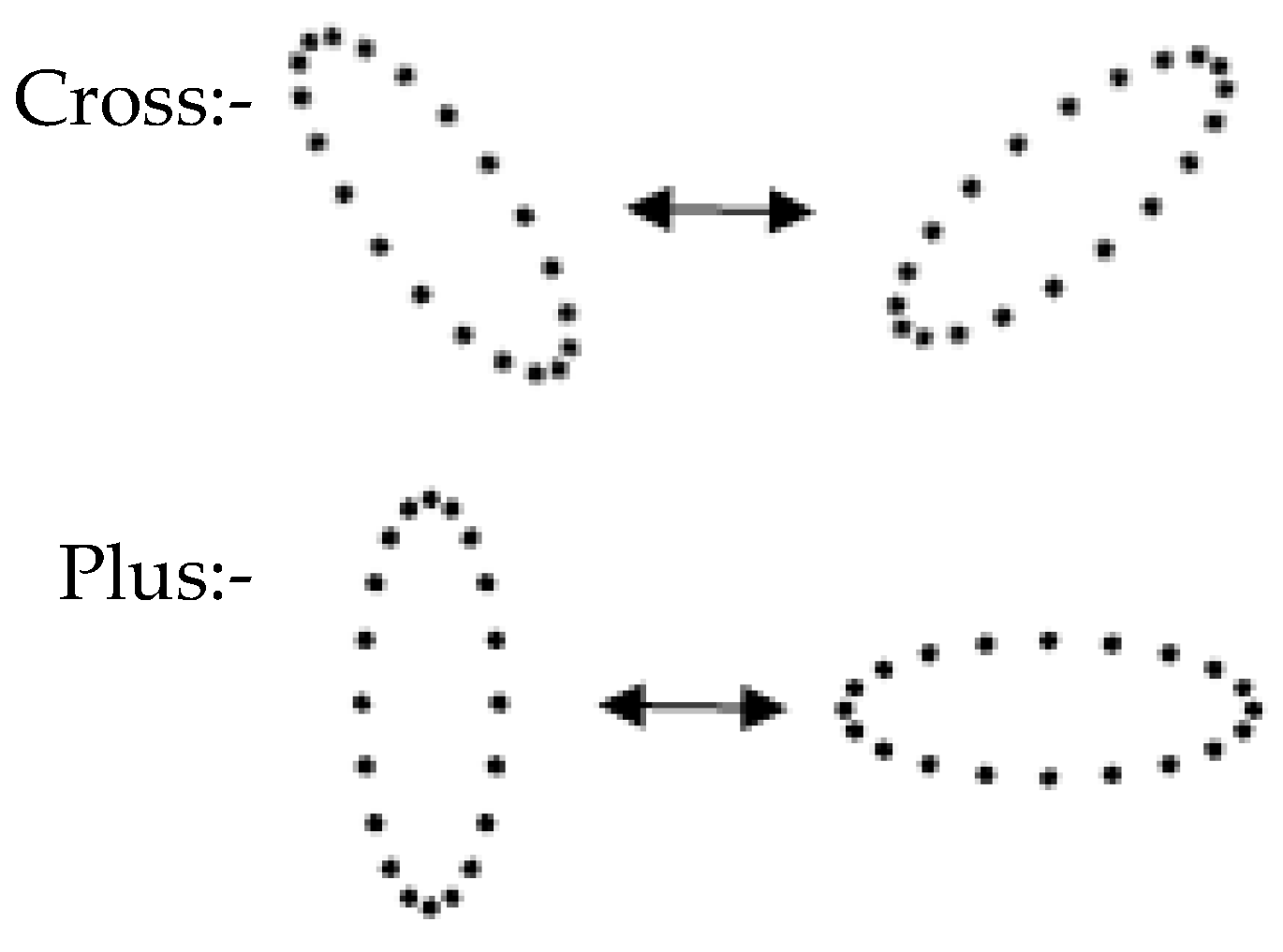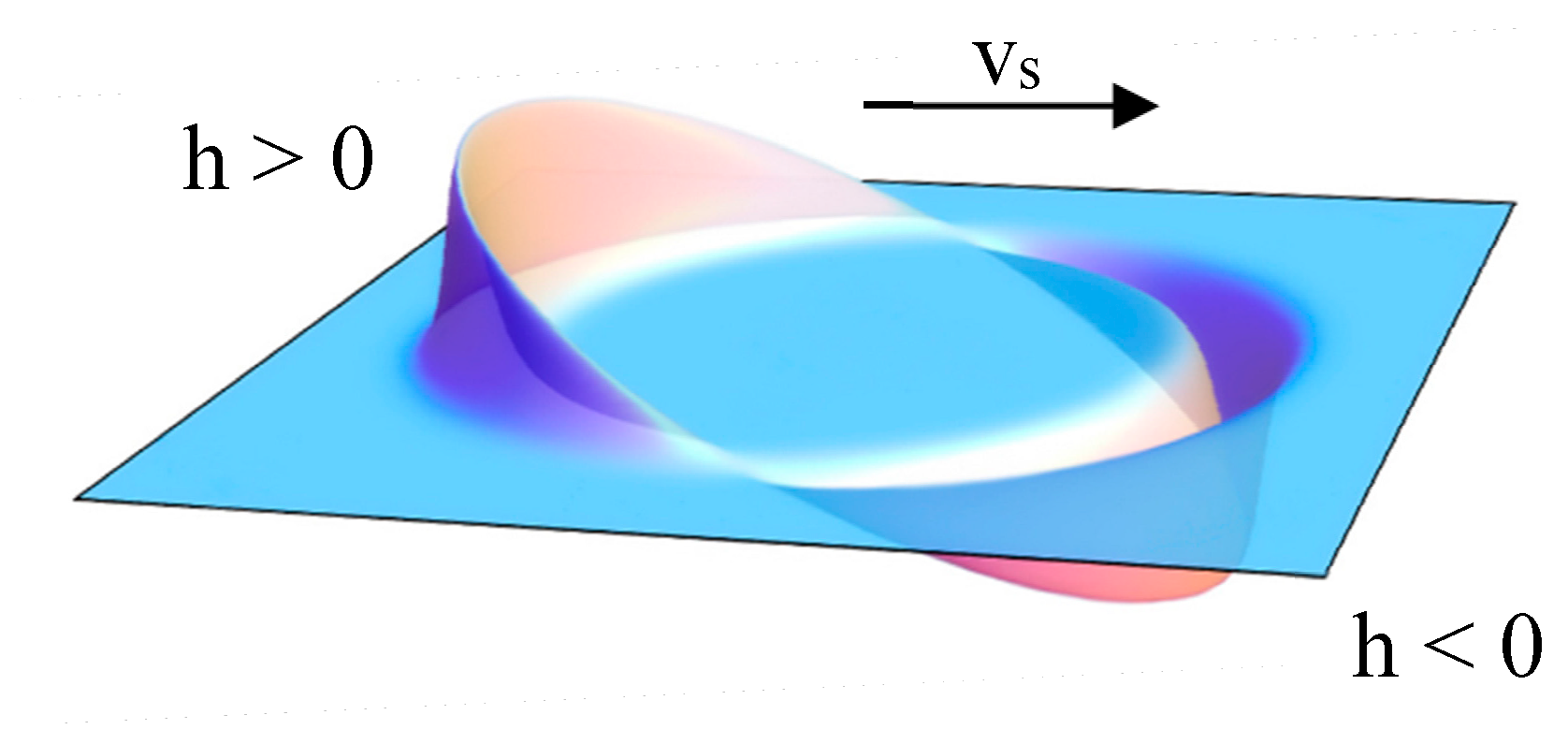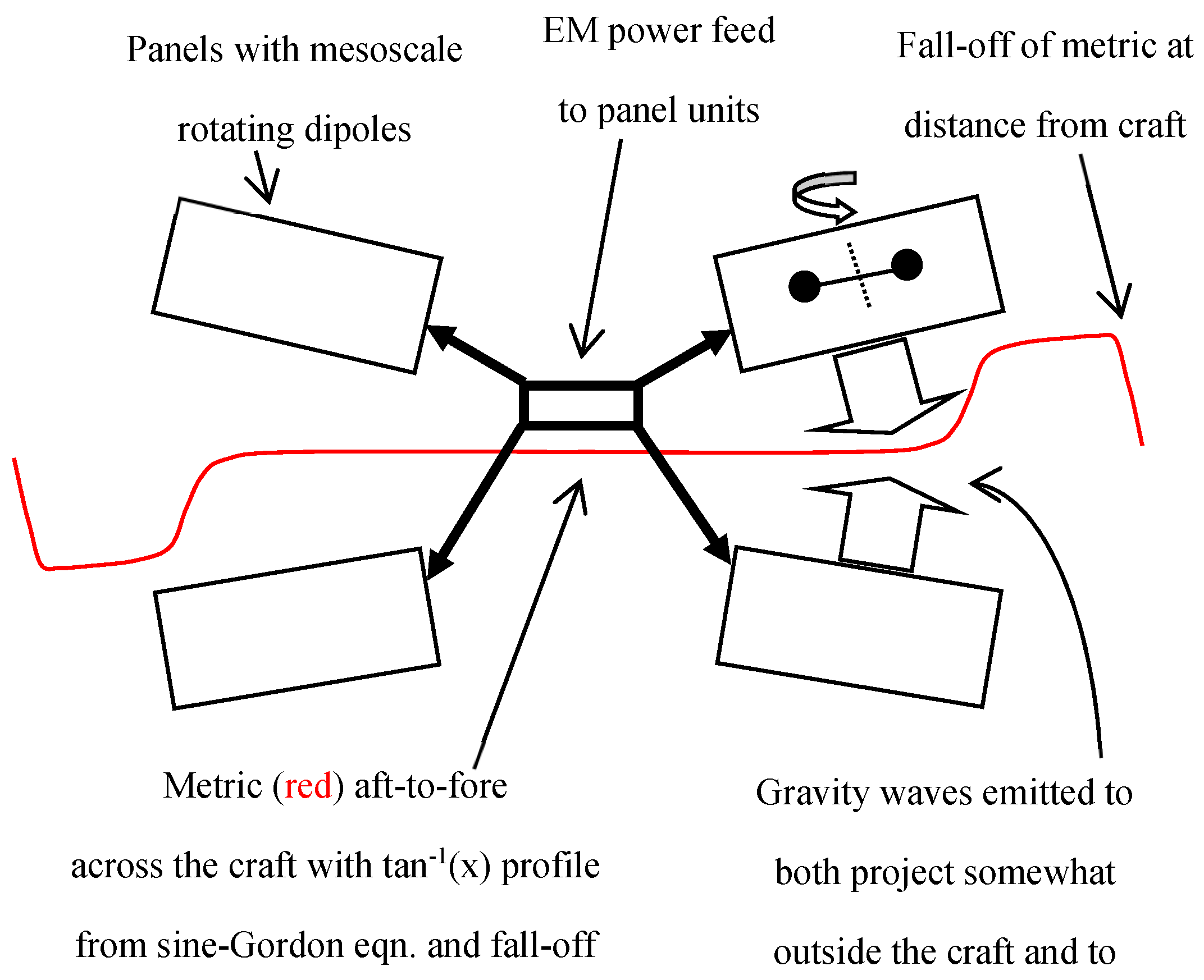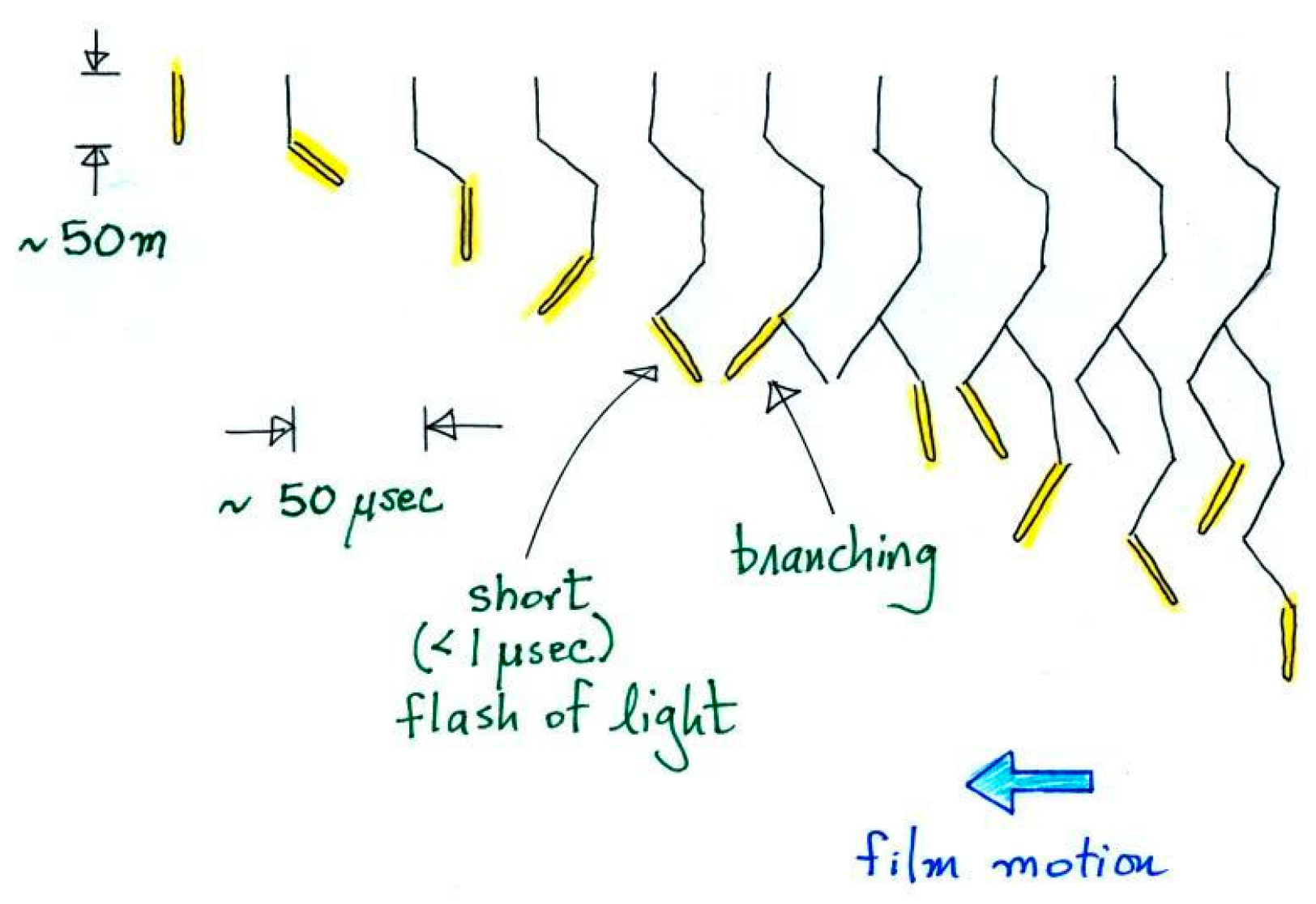1. Introduction
Warp-drive[
1] or Hyper-drive is the staple of many science fiction movies and TV series. Indeed the writers of these series have often seen strange phenomenon in the skies or report from good witnesses (usually airline or military) common themes of devices suddenly appearing overhead, noiselessly and then stretching and disappearing in an instant. It might not appear wise to conflate science fiction and real scientific or engineering inquiry but that doesn’t mean good people don’t cross the codes (scientifically trained people writing for the media) or that it never influenced “real” science or engineering - take Star Trek and what suspiciously look like mobile phones or laptop computers way ahead of production engineers ever devising such things.
Given that the Zeitgeist of sightings of UAPs (a.k.a. UFOs) and that many people (author included) have seen or know people who have seen and report common aspects of these phenomenon, furthermore, that the US Congress has conducted hearings with top witnesses[
2], then this is now an area of serious academic study - not least for the potential military threat of outside forces or indeed the favouring (by outside forces) of undesirable enemy nations, for whatever reason… it would be good to close any burgeoning technological gap.
The area most pertinent to the understating the dynamics of the Universe is, of course, General Relativity. The study of gravitational waves and the warping of space seem to imply hugely massive structures and cataclysmic end of life scenarios for cosmic bodies; even the detection of the waves requires massive equipment. We put forth an argument whereby it may be possible to generate coherent gravitational waves at much lower energies and by these means, warp space without the need of exotic matter too. Addressed too is the concern that even a Warp-drive can’t go faster than light, for the very field changes it uses can only propagate at light-speed.
2. The Einstein Field Equations and Warping Space
Our understanding of large scale dynamics and gravity is by the Einstein Field Equations, derived by Einstein through heuristic means and Hilbert via Variational principles on the Relativistic Action; then the mathematics of curved spaces and the Geodesic Equation of Riemann/Christoffel and the Tensor Calculus of Ricci-Curbastro/Levi-Civita, before Einstein and Hilbert[
3,
4]:-
Solutions of eqn. (2) are “metrics” that indicate how space is curved by matter and energy: for instance, the Schwarzschild or Kerr metrics[
3,
4] describe a gravitating body and a rotating gravitating body, respectively. Another aspect of the solutions in “linearised gravity” is the wave equation derived by Einstein (trace reversed used),
Where
is (typically) a small perturbation to the metric
The wave equation can be written without sources and solved in the far-field, giving solutions[
3,
4],
Where
is the amplitude tensor and the wave vector is given by:
is. The solutions in the transverse-traceless gauge are two polarisations h
+ and h
x, which below we’ll assume to travel in the z-direction as a plane wave,
These waves warp space around the z-axis in the following manner on a ring of particles:-
Figure 1.
The oscillatory polarisation of gravity waves (z-axis through page).
Figure 1.
The oscillatory polarisation of gravity waves (z-axis through page).
The waves detected by LIGO are truly miniscule deviations[
5] and are most definitely in the linear regime but eqn. (4) can be written with higher order terms to show the self-interaction of gravitational field energy by terms such as,
on the RHS:
contains quadratic terms in the field, such as
Usually discussion about warp-drives concern huge amounts of mass-energy or even exotic mass-energy[
1,
6]; gravitational waves afford another possibility with
both the expansion and contraction of space “in the same package”. We ponder in the next section whether an array of energy re-cycling (oscillating) and efficient high frequency microscopic sources would generate superposition of waves and furthermore, whether this superposition could be non-linear, reinforcing and allow soliton-like solutions fixed around the craft with sub-harmonic generation.
3. Making Microscopic Sources of Coherent Gravitational Radiation
Electromagnetic radiation happens predominately with dipole radiation[
4,
7] and gravitational radiation with the quadrupole[
3,
4], for which the time averaged power emitted by a sinusoidal variation is, respectively,
Where p
0 is the electric dipole moment and
is the quadrupole moment. So let us imagine a spinning dipole (“dumbbell”) and equate the radiation power of both aspects,
There again for a molecular or even nuclear system, if the electric dipole moment is of the order of the unit charge multiplied by distance and the quadrupole moment is of the order mass multiplied by that distance squared, we can obtain from eqn. (9) a rough relation between the charge mass ratio (e/m) and their distance of separation,
Whereupon some 1.60x10-19 Coulombs of elementary charge and 1.67x10-27 kg of proton mass at Angstrom separation would rule out a molecular system; the high frequencies of some 1038 Hz to pump the system cannot be generated or even managed; more so with nuclear distances.
However a collective phenomenon governing some thousands, tens of thousands or more of proton mass equivalents operating at a distance scale of tens of meters, might make the system amenable to excitation/pumping by gamma rays or even lower frequencies. Furthermore, selection rules (or an equipotential surface/reflective agent) against electromagnetic dipole radiation could severely limit the large amount of electromagnetic power circulating in the system (eqn. (7)) from being radiated (so opaque, save being transparent to the pumping frequency) but with equivalent amounts of gravitational radiation power being emitted.
Candidates for such collective systems are superconductivity[
8,
9,
10]/Cooper pairs, super-atoms[
11,
12], Bose-Einstein Condensates[
9] and ferromagnetism[
13]/spin-waves. The discussion is conceptual or speculative at this point and we will return to this in later papers.
We’ve stated at the nuclear or molecular level that such systems are too small to generate gravitational waves; the frequency of oscillation would be too high, but just as with ferromagnetism and circulating micro-currents (spin) being equivalent to a surface current around the magnet or even the Einstein-de Haas[
13] effect and how microscopic spin can lead to a macroscopic rotation of the magnet, we expect to be able to form an equivalent rotating dipole (hence a gravitation quadrupole) at the mesoscopic level (microns to 10s of nanometers). This would ensure that the charge to mass ratio is sufficiently low and the distance sufficiently high (eqn. (10)) to generate gravitational radiation with optical to x-ray to gamma ray pumping.
The linearised gravitational equation (eqn. (4), but with self-interaction terms discussed in section 2) is a Klein-Gordon equation. An interesting question is if the non-linear back-reaction of the field on the array of transmitters is of the form below,
This is the “sine”-Gordon equation[
14,
15]. Two such coherent transmitters set up in opposition to make a standing wave, could with this non-linear equation possibly reinforce the superposition (a “greater than the sum of its parts effect”), make a “kink” solution (
tan-1(x-vt) profile and form a soliton of fixed polarity) and even generate sub-harmonics - which would be good if the pumping frequency is very high frequency but the soliton wave is to be the dimensions of the space-craft.
Entering the non-linear regime doesn’t require one to be in the near-field of the Schwarzschild radius either. When the gravitational wave strain becomes comparable to unity the system is highly non-linear. Let us estimate this with the gravitation strain for a binary system[
3,
4],
Where the quadrupole moment is and the distance to the observer is d. We ask if a collective phenomenon (see the earlier discussion about Ferromagnetism or the Einstein de Haas effect in regards to microscopic processes having an equivalent macroscopic effect), such that presents as 10µg equivalent of quadrupoles orbiting at a distance of 100nm, at some angular velocity of around 2.5x1016 rads/s, would generate non-linear waves over a region of some 100m (that is, the size of a putative space-craft)?
4. The Alcubierre Metric
Alcubierre[
1] starts out with the “3+1”/ADM formalism with a lapse function of unity and a shift function
where
is the velocity of the ship,
is a spherical region around the ship and
is a “top-hat” function around the ship that rapidly decays for parameters
embedded in the function, that represent the extent of the warp field and the latter, when large, ensures that habitable area experiences small tidal forces. His metric is,
This rapidly decays to a flat-space metric outside of the warp bubble of the ship and at least locally, the region around the ship is considered flat. He is able to confirm that within the bubble the ship inhabitants are in free-fall and experience no tidal forces.
The top-hat function, eqn. (14), makes the space ahead of the craft’s motion contract and expand behind it though this is related via eqn. (15).
The expansion of the volume element, eqn. (15) (
Figure 2), observed by Eulerian observers, is itself obtained from the extrinsic curvature tensor of the hyper-surface and
is essentially the trace of it.
Importantly Alcubierre proves that for any velocity that the motion of the craft is time-like, that is physically plausible, by substituting into the metric (eqn. (13)) and showing that the co-ordinate time is the same as the proper-time.
However, Eulerian observers in the same frame running along with ship with velocities normal to the warp bubble will see a failing of Weak and Dominant Energy Conditions (WEC and DEC respectively):-
WEC concerns the total energy density and the DEC implies that mass-energy can’t travel faster than light. Alcubierre runs the field equations “in reverse” and derives the stress-energy tensor from his metric,
The implication is that exotic matter with negative energy density is required.
A further limitation of the Alcubierre drive is that all field changes propagate at the speed of light, so any change made ahead of the craft can’t precede faster that light, thus the craft can’t travel faster than light. In principle, if the space between the points of travel was pre-contracted, then progression would be faster than light. However this “corridor” would take the light travel time to the destination to set up in the first place.
5. Our Method and The “Step-Warp” Drive
Gravitational waves (even within the regions expanding space with h < 0) don’t violate the weak and dominant energy conditions. Our method using such means doesn’t require exotic matter.
Figure 3 shows how we might orientate the “mesoscale collective phenomena” array panels of micro-oscillators and pump them with optical (or above) frequency electromagnetic radiation, to “convert” to gravitational radiation, as per the discussion in section 3 (actually preventing the emission of EM radiation, whilst the
high frequency rotating dipoles emit gravity waves).
The rotating electromagnetic aspect of the dipoles produce radiation in the plane of rotation[
7], which would be suppressed by selection rules or an equipotential surface (and boundary conditions, like a wave guide). The gravity waves produced from the quadrupole moment of the rotating mass aspect of the dipoles, are produce perpendicular to the plane of rotation (along the z-axis).
The array panels form a standing wave between them of the tan-1(x) profile (these would also fall off with distance from the source) discussed in section 3, which would be oriented so that space expands ahead of the craft and contracts behind it, leaving the inhabited area free from tidal forces. It is hoped that the back-reaction of the gravitational waves on the panel modulate the sources, so this term: term would enter eqn. (4) and render it the “sine-Gordon” equation. Hopefully too, the high frequency gravitational radiation would generate a large sub-harmonic corresponding to the desired warp-field. If the linearised wave equation, even with second order self-interaction terms (section 3), cannot lead to the desired behaviour, then the full gravitational wave equation can be used and non-linear equations other than the sine-Gordon equation explored.
The Alcubierre drive cannot be superluminal for reasons already discussed at the end of the previous section. We propose the “Step-Warp Drive” to overcome this and name it in analogy to the stepped leader of a lightning strike, with its slow, quick, slow progression.
Figure 4 shows how a Boys’ Camera[
16] records the rapid descent of a stepped leader: cosmic radiation ionises the air and the ionised channel lowers from the cloud for about 50 metres, very rapidly to then halt for about 50 microseconds, until another cosmic ray event.
We propose that, momentarily, space ahead of the craft is expanded so that the Shapiro Delay[
3,
4]
speeds-up light. The effect of gravitational waves on the metric is (only cross polarisation shown),
Whereupon the lapse function (in the ADM sense[
3,
4]) would be some function of the metric,
Such that
would increase in the negative phase of the gravitational wave. The effective speed of light would be,
This expansion phase would be followed by aggressive contraction of space by a subsequent wave, such that the contracted space viewed in global coordinates is transited by the craft, not just more quickly than if it only did the contraction (and travelled at local light-speed) but also if did the expansion phase first.
6. Conclusion
UAP/UFO activity, reported for millennia and with ever increasing frequency, due to the ubiquitous smart phone and the internet, has become the concern of militaries and governments around the world and fits into our paradigm of scientific and technological epistemology, not just fear or awe. The phenomenon is no longer a matter of opinion or the preserve of cranks. It is now a matter of serious academic study in the physical sciences, indeed, even engineering. It behooves us to enquire not just out of mere curiosity, but more importantly, for defensive reasons. It may be that the light-sphere of human generated information around our system, at some 120 light-years, could attract unwanted attention…
This speculative, “back of the envelope” paper revolves around the notion that gravity waves of very high frequency would undeniably be produced from collective mesoscale (microscopic to 10s of nanometer) processes of rotating dipoles – the intensity of gravitational waves goes with the sixth power of frequency. It is hoped that selection rules or boundary conditions of some kind of reflective equipotential surface would keep the electromagnetic energy in the system and prevent it from being radiated. When pumped with electromagnetic energy, the net effect is the conversion of electromagnetic energy to gravity waves.
Further hopes are that the non-linearities inherent in the gravitational field equations (and this doesn’t imply being near the Schwarzschild radius either – very high frequency quadrupole rotation can do this far from the system) and the set up using opposing sources, would allow for fixed polarity standing waves with a “kink” solution (sine-Gordon equation made by back-reaction on the source), non-linear reinforcement and the generation of sub-harmonics from the very high frequency gravitational radiation. Overall, this might allow an Alcubierre metric to be affected without the use of exotic-matter nor humongous energy requirements. It was shown that the charge to mass ratio and distance of these mesoscale dipoles might make electromagnetic pumping from optical to gamma radiation scale possible.
The “Step-warp drive” was discussed as a means of surmounting the light-speed limit of the Alcubierre Drive.
Further work is obviously needed on this highly speculative and complicated subject:- on mesoscale collective systems and the non-linear solutions to allow for standing wave generation of fixed polarity, non-linear reinforcement and sub-harmonic generation – it may even require use of the full gravitational field equations.
References
- Alcubierre, M., "The warp drive: hyper-fast travel within general relativity". Classical and Quantum Gravity, 1994. 11 (5). [CrossRef]
- Epstein, K., "UFOs and aliens bring a divided US Congress together". British Broadcasting Company, 2023. https://www.bbc.co.uk/news/world-us-canada-66320498.
- Misner, C., K. Thorne, and J. Wheeler, "Gravitation". 21st ed. 1998: W. H. Freeman and Co.
- Landau and Lifshitz, "A Course in Theoretical Physics: Classical Theory of Fields". Vol. 2 1982: Butterworth-Heinemann.
- Barish, B.C. and R. Weiss, "LIGO and the Detection of Gravitational Waves". Physics Today, 1999. 52(10): p. 44-50. [CrossRef]
- Lentz, E.W., "Breaking the warp barrier: hyper-fast solitons in Einstein–Maxwell-plasma theory". Classical and Quantum Gravity, 2021. 38(7). [CrossRef]
- Jackson, J.D., Classical Electrodynamics. 2nd ed. 1975: Wiley.
- Kittel, C. and H. Kroemer, Thermal Physics. W. H. Freeman and Company, San Francisco. Vol. 2nd ed. 1980.
- Landau and Lifshitz, "A Course in Theoretical Physics: Statistical Physics". Vol. 5. 1996: Butterworth Heinemann.
- Landau and Lifshitz, "A Course in Theoretical Physics: Statistical Physics, Part 2". Vol. 9. 1996: Butterworth Heinemann.
- Ball, P., "A New Kind of Alchemy". Newscientist, 2005. 2005-04-16.
- Bergeron, D.E., "Formation of Al13 −Evidence for the Superhalogen Character of Al13". Science, 2004. 304 (5667). [CrossRef]
- Bozorth, R.M., Ferromagnetism. IEEE Press 1978.
- Ablowitz, M.J. and H. Segur, "Solitons and the Inverse Scattering Transform". ARAP Tech Memo, 1981. 80-6.
- Kivshar, Y.S. and B.A. Malomed, Dynamics of solitons in nearly integrable systems. Reviews of Modern Physics, 1989. Vol. 61, No. 4. [CrossRef]
- Feynman, Leighton, and Sands, The Feynman Lectures on Physics. Addison-Wesley, Reading, Massachusetts. 1989.
|
Disclaimer/Publisher’s Note: The statements, opinions and data contained in all publications are solely those of the individual author(s) and contributor(s) and not of MDPI and/or the editor(s). MDPI and/or the editor(s) disclaim responsibility for any injury to people or property resulting from any ideas, methods, instructions or products referred to in the content. |
© 2024 by the authors. Licensee MDPI, Basel, Switzerland. This article is an open access article distributed under the terms and conditions of the Creative Commons Attribution (CC BY) license (http://creativecommons.org/licenses/by/4.0/).







